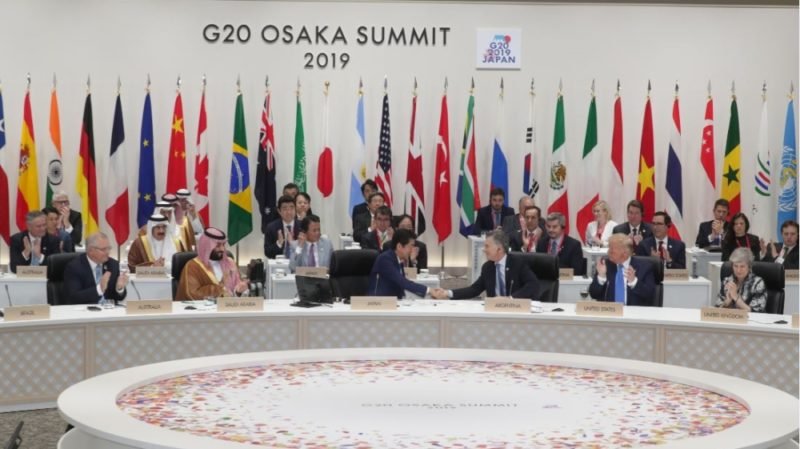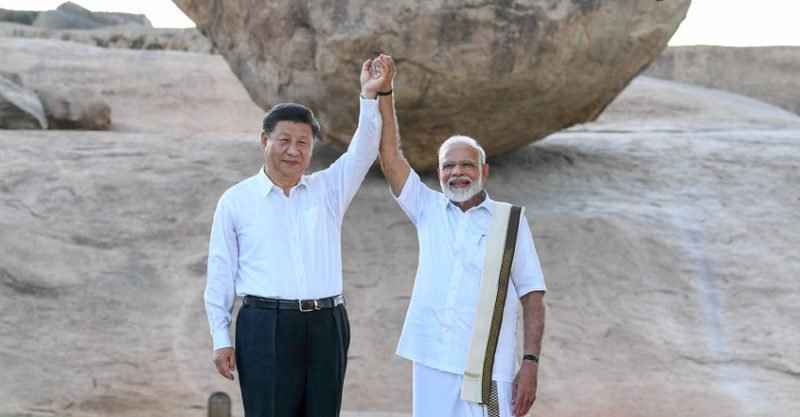G20 Leaders’ ‘Virtual’ Coronavirus Summit Can be Game-changer

The government of Saudi Arabia has announced a ‘virtual’ coronavirus summit with leaders of the G20 (Group of 20) member states will convene on Tuesday. The online meeting will occur a few days after US President Donald J. Trump hosted a G7 (Group of 7) world leaders’ summit via teleconference call from Camp David.
The leaders of the G7 and G20 are expected to address challenges that nations are confronting in regards to the COVID-19 outbreak and to brainstorm on solutions to contain the deadly and contagious virus. China was the hardest hit, but Beijing had also made the most remarkable progress to overcome the epidemic.
Last month, thousands of Chinese were testing positive for the coronavirus daily and hundreds were dying each week. On their worst day, Feb. 5 – over 10,000 people in the Chinese mainland were testing positive for the virus. The country appeared headed towards catastrophe; the city of Wuhan in central China’s Hubei Province with a population at over 11 million was under lockdown, starting Jan. 23.
Beijing was forced to implement strict quarantine measures on all municipalities, counties, provinces and autonomous regions in the country. But amid China’s darkest days in recent years, New Delhi had offered gestures of goodwill for their neighbouring nation.

Modi and Xi weather the storm together
In February, Indian Prime Minister Narendra Modi ordered the Indian Air Force to fly a cargo plane to deliver 15 tons of medical supplies to Wuhan and they had evacuated 100 Indian citizens in the city on the return flight. The evacuations had lessened the burdens of local medical caregivers to treat patients while ensuring the safety of Indians.
By the end of February, around 300 Indian expatriates in China had returned to their native homeland. Meanwhile, the Chinese Embassy in New Delhi has set up a contact mechanism with Indian health authorities to keep both nations fully informed over how the COVID-19 outbreak has impacted the two countries.
It’s been two months to this day – March 23 – since Beijing had imposed its draconian quarantine measures in the country, but the Chinese are beginning to see light at the end of the tunnel as ‘freedom of movement’ restrictions are gradually lifting in China. I stand witness to it, since I had been living in China’s capital city since the coronavirus outbreak had started.
A few weeks ago, the city’s streets were mostly empty, many shops shuttered, few cars on the roads, while the buses and subways had almost not passengers even on regular workdays during rush hour. But now, the bustling crowds are returning and the shops are filling up with pedestrians. Yet, India is tackling the spread of COVID-19, while its cities are starting to look like ghost towns.
Beijing returns the favour to New Delhi
When it had become apparent India was witnessing a higher number of people getting infected by coronavirus about two weeks ago, Beijing officials understood the dangers because they had already lived through the nightmare.
Chinese President Xi Jinping had weeks earlier received a heartfelt letter of condolences from PM Modi at the peak of the epidemic in China and Xi had sought to express his gratitude by encouraging China’s Foreign Ministry to pledge much-needed help to New Delhi to “control” and search for “diagnosis” of the COVID-19 spread in India, according to the Hindustan Times.
A press release from China’s Foreign Ministry is quoted as saying:
“China is ready to continue to share its experience in epidemic prevention and control, and diagnosis and treatment with the Indian side and will provide further support and assistance within its capacity, according to the needs of the Indian side.”
The Indian government is struggling to maintain a sufficient supply of face masks, respirators, and other medical equipment to curb the spread of COVID-19 and to treat patients.
However, China is going back to business, reopening factories, warehouses and offices. Chinese manufacturers can receive government subsidies and technical support to reconvert their factories to mass-produce face masks and other coronavirus medical-related supplies.
Chinese hospitals are seeing fewer patients for treatment, therefore Beijing can re-deploy its resources elsewhere such as sending supplies and medical teams to India. PM Modi should make the phone call to request aid from Beijing.

Modi as bridge builder to restore Trump-Xi friendship
India can receive stronger support from China to combat the coronavirus. Yet, China and India are not alone in this fight. Europe is getting devastated, while the US has just entered the maelstrom. Yes, the USA stands tall as the world’s richest and most powerful superpower, but they are not as prepared as India or China to contain the virus.
US hospitals have disclosed they are running out of emergency supplies, while local public health officials have failed to enforce tougher lockdowns and quarantines in American cities. Much worse is yet to come. China and India can help Americans, but that can only happen if Washington formally requests assistance from them.
Modi and Trump hold an endearing friendship. Last month, Trump visited the country, while he received a very warm welcome from the multitudes of Indians. President Trump announced in a speech in front of over 100,000 Indians at the world’s largest Cricket Stadium in Ahmedabad that “America loves and respects India.”
Trump’s Namaste speech has ushered in closer ties between the two great nations. Modi has Trump’s ear and Beijing stands willing to help the US, but Washington has to overcome its long-held mistrust with Beijing. Modi can serve as an effective mediator to re-open the lines of direct communication between Xi and Trump.
Make the G20 great again
Leaders of the G20 member states are set to enter into a very important teleconference call this week and it’s incumbent upon them to overlook past grievances, stop blaming others and to call for solidarity. The time is now for all nations to join together to contain the pandemic.
Yet to achieve miraculous results, the world must witness a dramatic improvement of bilateral relations between the US and China. Modi has a golden opportunity to make that happen at the G20 ‘Virtual’ Coronavirus Summit.
He’s already friendly with both Trump and Xi. He can seize the day by bringing Beijing and Washington closer together and that can turn the tide as Americans and Chinese could collaborate in the search for new vaccines and medicines to treat COVID-19 patients across the globe.


















